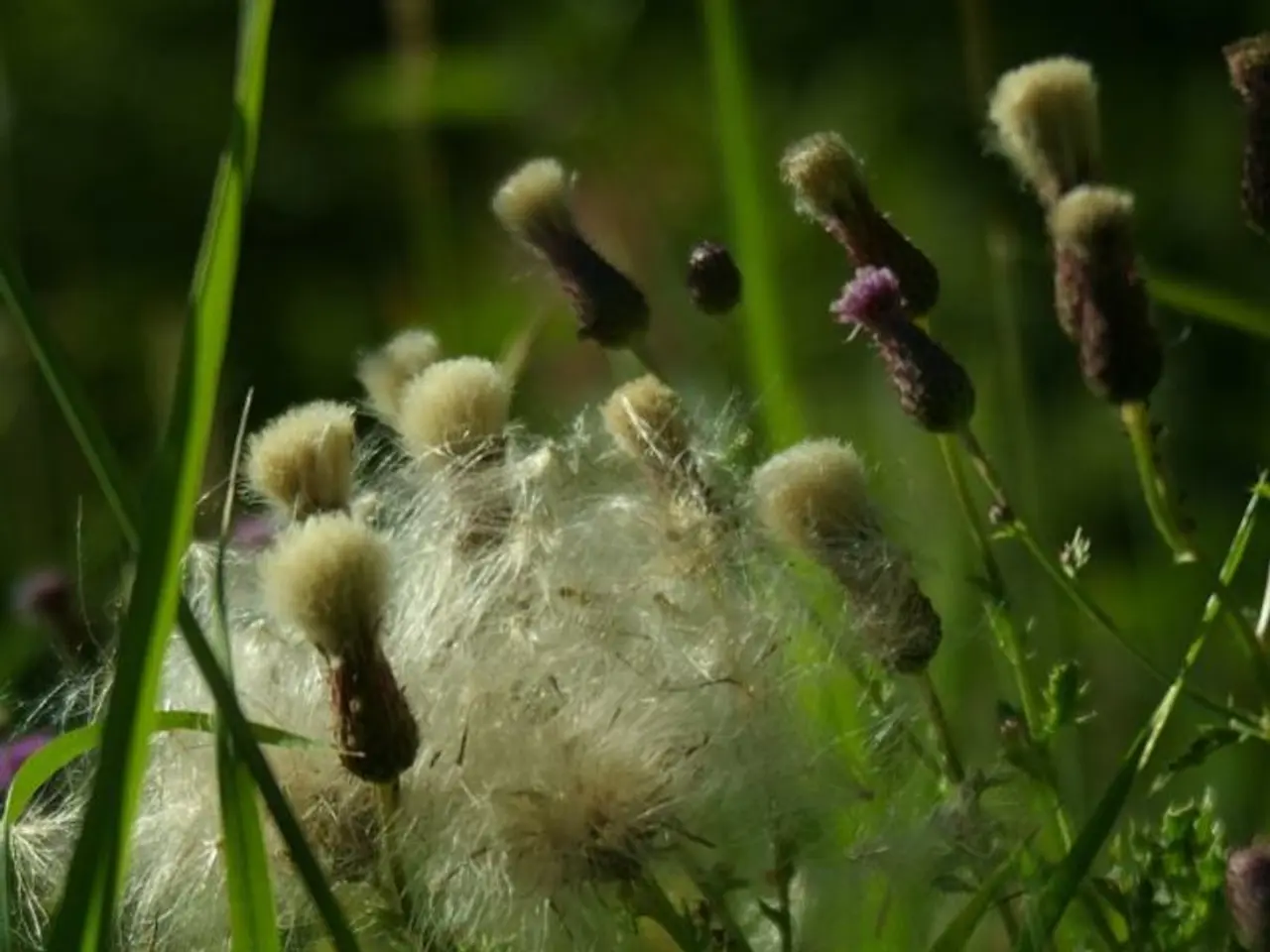Maintaining Lush Green Yards During the Sunny Season
In the heart of Iowa's sunny and dry summer months, maintaining a healthy and resilient Kentucky bluegrass lawn requires tailored practices to ensure its survival and recovery during cooler seasons. Here are some essential tips for mowing, watering, pest control, fertilization, and weed control.
### Mowing During hot, dry periods, keep your Kentucky bluegrass slightly taller to provide shade to the roots and reduce water loss through evaporation. Aim for a mowing height of about 3 inches or slightly higher. Mow infrequently but at the recommended height, avoiding cutting more than one-third of the grass blade at a time to reduce stress on the grass.
### Watering Water deeply and infrequently to encourage robust root growth. Kentucky bluegrass needs approximately 1 to 1.5 inches of water per week. The best time to water is early morning (5:00 to 9:00 am) to maximize absorption and minimize evaporation. Use the cycle and soak method, watering in multiple short cycles with breaks in between to improve water penetration and reduce runoff. Avoid watering in the heat of the day (midday) or late evening to prevent fungal diseases.
### Pest Control Regularly monitor for common summer pests that affect Kentucky bluegrass, such as grubs or sod webworms. Use integrated pest management approaches, including proper lawn care practices that promote healthy turf resistant to pests. Avoid overwatering, which can encourage fungal diseases and pest problems.
### Fertilization It is generally not advisable to fertilize Kentucky bluegrass during the summer months (June, July, August), as this can stress the grass further. The best fertilization timings in Iowa are spring (April or May), mid-September, and late October/early November. Use slow-release fertilizers and follow recommended rates to avoid nutrient runoff and stress on the lawn.
### Weed Control Apply pre-emergent herbicides in early spring to prevent summer weeds. Maintain a dense, healthy turf to naturally crowd out weeds. Spot treat any visible weeds with appropriate post-emergent herbicides, considering the heat sensitivity of the lawn during summer. Keep mowing heights adequate to reduce weed seed germination by shading the soil surface.
By adopting these practices, you will help your Kentucky bluegrass lawn survive and stay healthy throughout Iowa's hot, dry summers, ensuring better drought tolerance and recovery in cooler seasons. Lush, shallow-rooted turfgrass is less drought tolerant and more susceptible to pest problems. When watering, apply the required amount in a single application or possibly 2 applications 3 or 4 days apart.
[1] Smart irrigation systems or moisture sensors can optimize watering schedules during dry spells. [2] White grubs are the most serious and destructive lawn insect pest in Iowa, with June to early August being the best time to apply a preventive insecticide for white grub control. [3] Symptoms of water stress in turfgrass include leaf color turning bluish green, and it is generally not advisable to fertilize Kentucky bluegrass and other cool-season grasses during the summer months. [4] Dandelion, plantain, white clover, and other broadleaf weeds are best controlled with an application of a broadleaf herbicide in fall. Crabgrass is best controlled with an application of a pre-emergence herbicide in spring.
- During Iowa's dry summer months, keep your Kentucky bluegrass slightly taller to shield the roots, reducing water loss through evaporation when mowing.
- To encourage strong root growth in Kentucky bluegrass, water deeply and infrequently, using the cycle and soak method in the early morning to maximize absorption and minimize evaporation.
- To maintain a healthy Kentucky bluegrass lawn, monitor for common summer pests like grubs and sod webworms, using integrated pest management approaches and avoiding overwatering.
- For effective weed control, apply pre-emergent herbicides in early spring to prevent summer weeds, and maintain a dense, healthy turf to naturally crowd out weeds; apply broadleaf herbicides in fall for dandelion, plantain, white clover, and other broadleaf weeds, while crabgrass requires a pre-emergence herbicide in spring.




